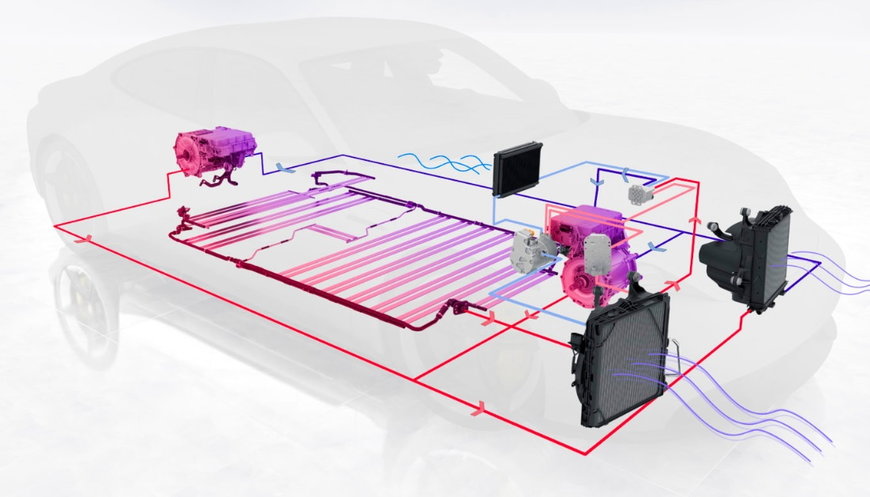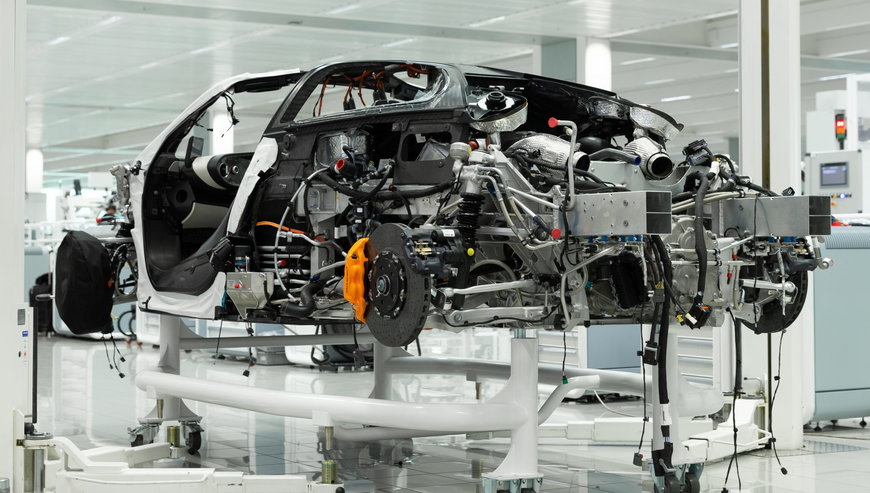Immersed-cell batteries as the next step?
As indirect liquid cooling of batteries gradually takes over from air cooling, a new technology is helping to boost the charging power: immersing cells in a dielectric fluid.

Immersed-cell battery produced by XING Mobility
Except in super-fast cars built for the racetrack, cooling of the lithium-ion batteries in the most recent electric vehicles is scaled according to the targeted charging power, as this increases continuously over a long period.
The air cooling system, notably chosen by Renault, Nissan, or by Kia in its first electric vehicles, has the advantage of being relatively light and inexpensive. However, air has a low heat capacity and the maximum load power of these vehicles is often limited to 1 kW of load per kWh of capacity (C-rate of 1).
Most batteries are now liquid-cooled, since the heat capacity of water is more than 4 times greater than that of air. The most common architecture in battery packs is a plate in contact with the underside of the cells and fitted with pipes carrying a heat transfer fluid to collect the heat. These batteries accept a C-rate of 1.5 to 2 kW/kWh. The disadvantage of this architecture is that the cooling is not uniform, because the thermal evacuation is carried out only on one side. In addition, it is difficult to cool the top of the cells due to the presence of electrical connections and sensors.

Cooling system of the Porsche Taycan battery
The Tesla Model 3 battery pack probably has the most efficient technology in any mass-produced vehicle currently on the market: it is cooled by tubes snaking between the rows of cylindrical cells. The C-rate exceeds 3 during part of the charging time. Although this solution offers the largest proportion of cooled surface area, this is far from complete and hotspots are always possible. Furthermore, a faulty cell can always transfer its heat to its neighbours and increase the risk of damage.
Immersed-cell batteries

McLaren Speedtail being assembled
The next step will be to ensure perfectly homogeneous cooling of the cells immersing them in a dielectric, and therefore non-conducting, fluid. This fluid completely covers each cell and the heat is then evacuated in an external exchanger thanks to a circulation of the heat transfer fluid. Its lower heat capacity compared to the water-glycol mixture is compensated by more direct contact with the cells and a higher flow rate in the exchanger.
Immersion cooling of the cells is already applied in various competition vehicles which are subject to particularly severe conditions (high and continuous power, numerous charge/discharge cycles, vibrations), especially in Formula E. The first commercialization of this technology in a road vehicle has begun, although it is for an exclusive sports car, the McLaren Speedtail, with production limited to 106 units.
The McLaren Speedtail is a hybrid with a 557 kW (757 bhp) 4-litre bi-turbo V8 and a 230 kW (313 bhp) electric motor. Its battery capacity is relatively modest - 1,647 kWh - but sized for a large number of high-power charge/discharge cycles. It is classed as an "extreme power" battery and the manufacturer claims that it offers the highest power-to-weight ratio of any high-voltage battery available today: 5.2 kW/kg, and above all a C-rate of over 160, close to that currently achieved in Formula 1. The 52 kg battery can deliver a maximum power of 270 kW for several seconds (battery emptied in 30 s with an average power of 200 kW). On the other hand, its specific energy is low at 32 Wh/kg, i.e. around 5 times less than that of the electric vehicle batteries currently on the market.
Immersion cell cooling is also an important subject for the development of future data centres, which have been identified as the 4th largest source of electricity consumption on the planet.
Source: Yvonnick Gazeau

